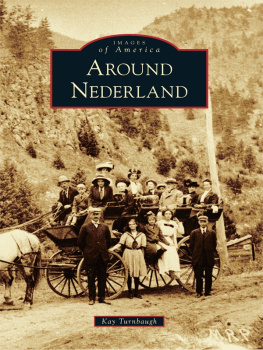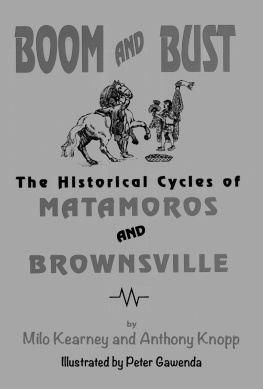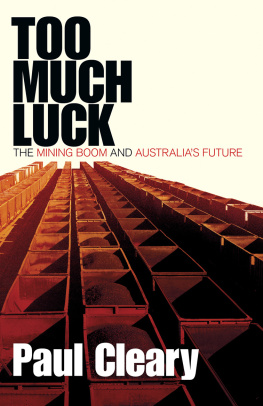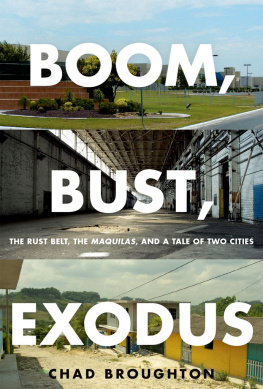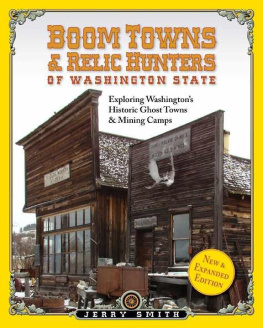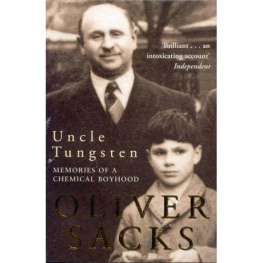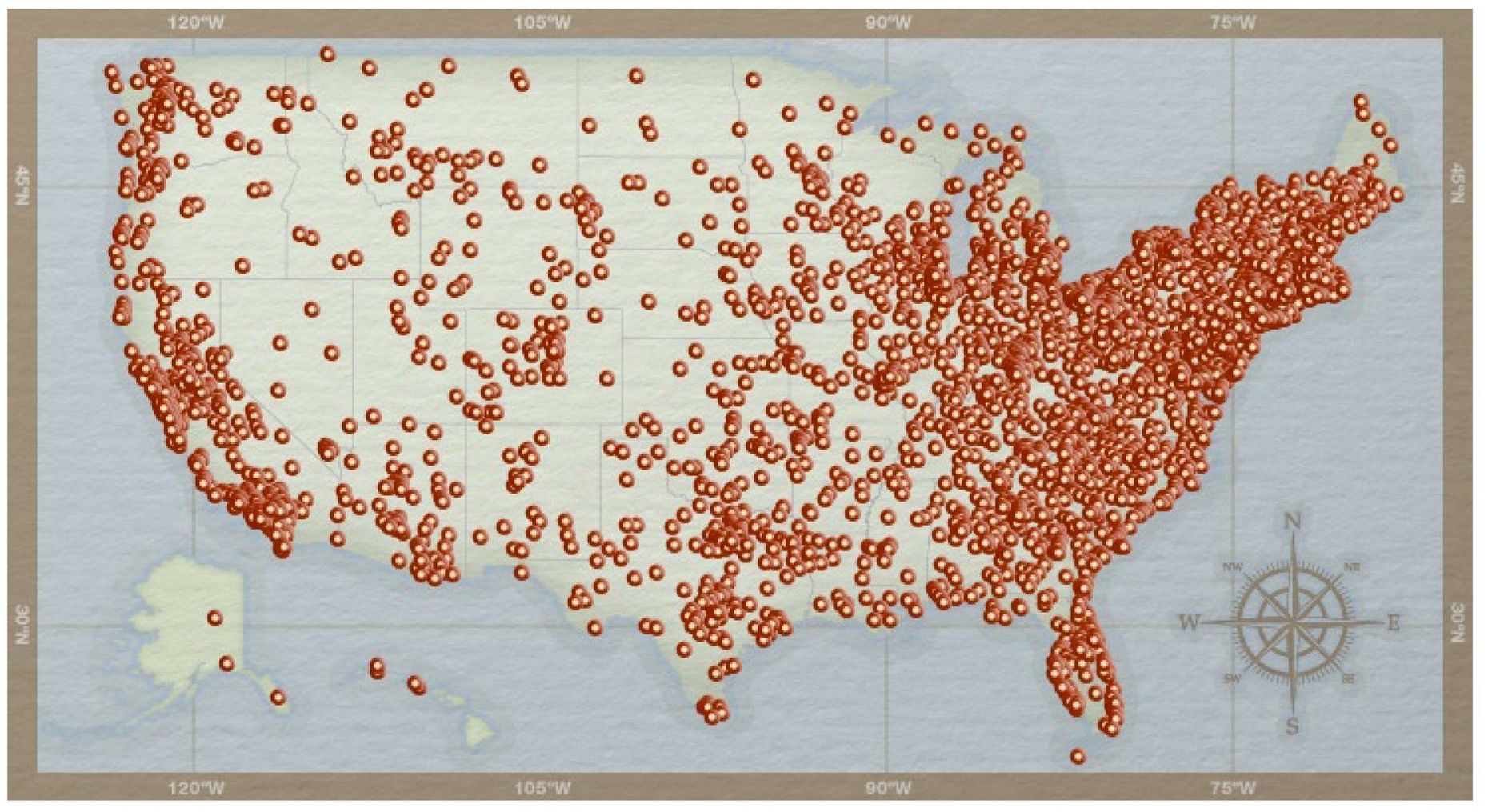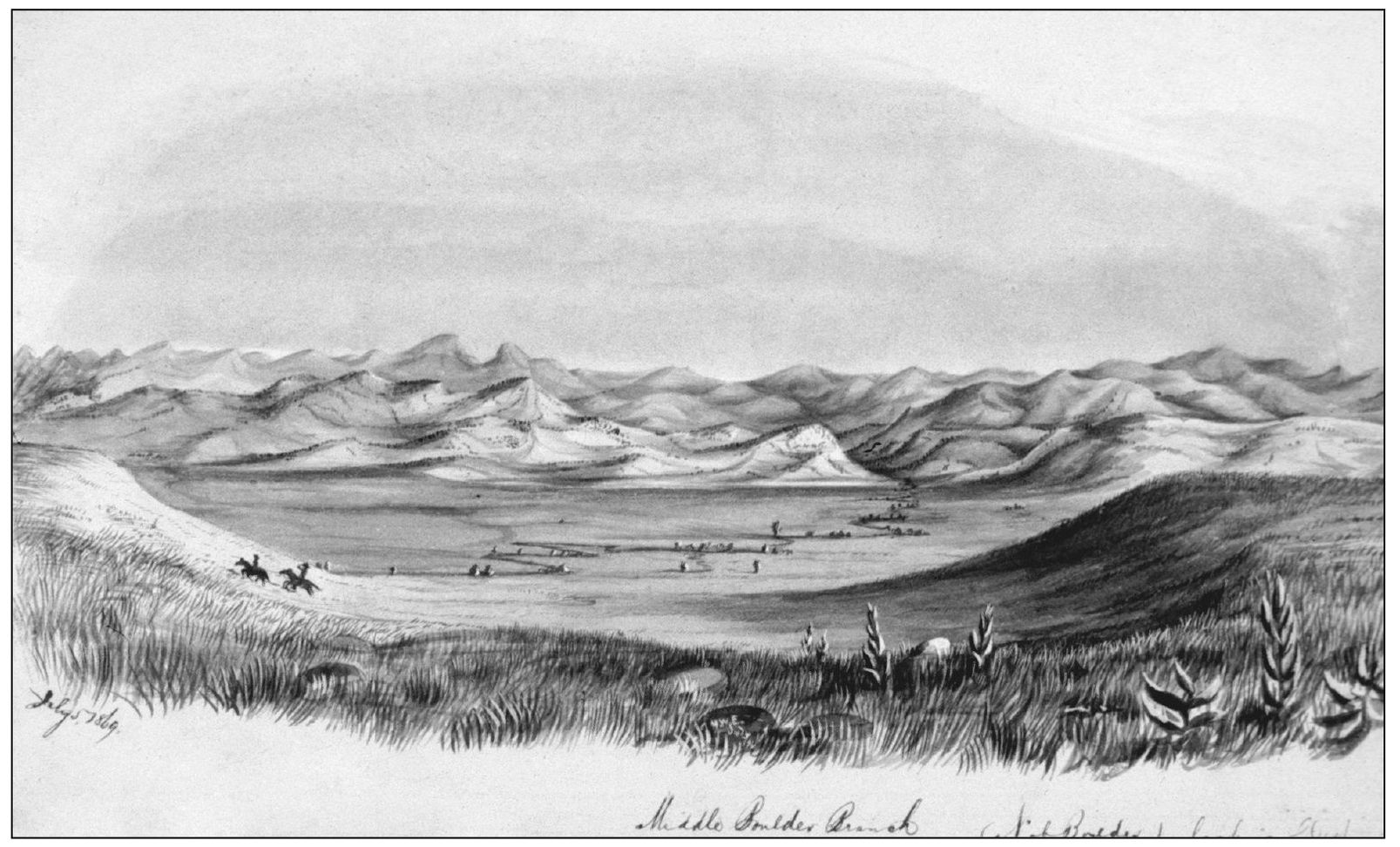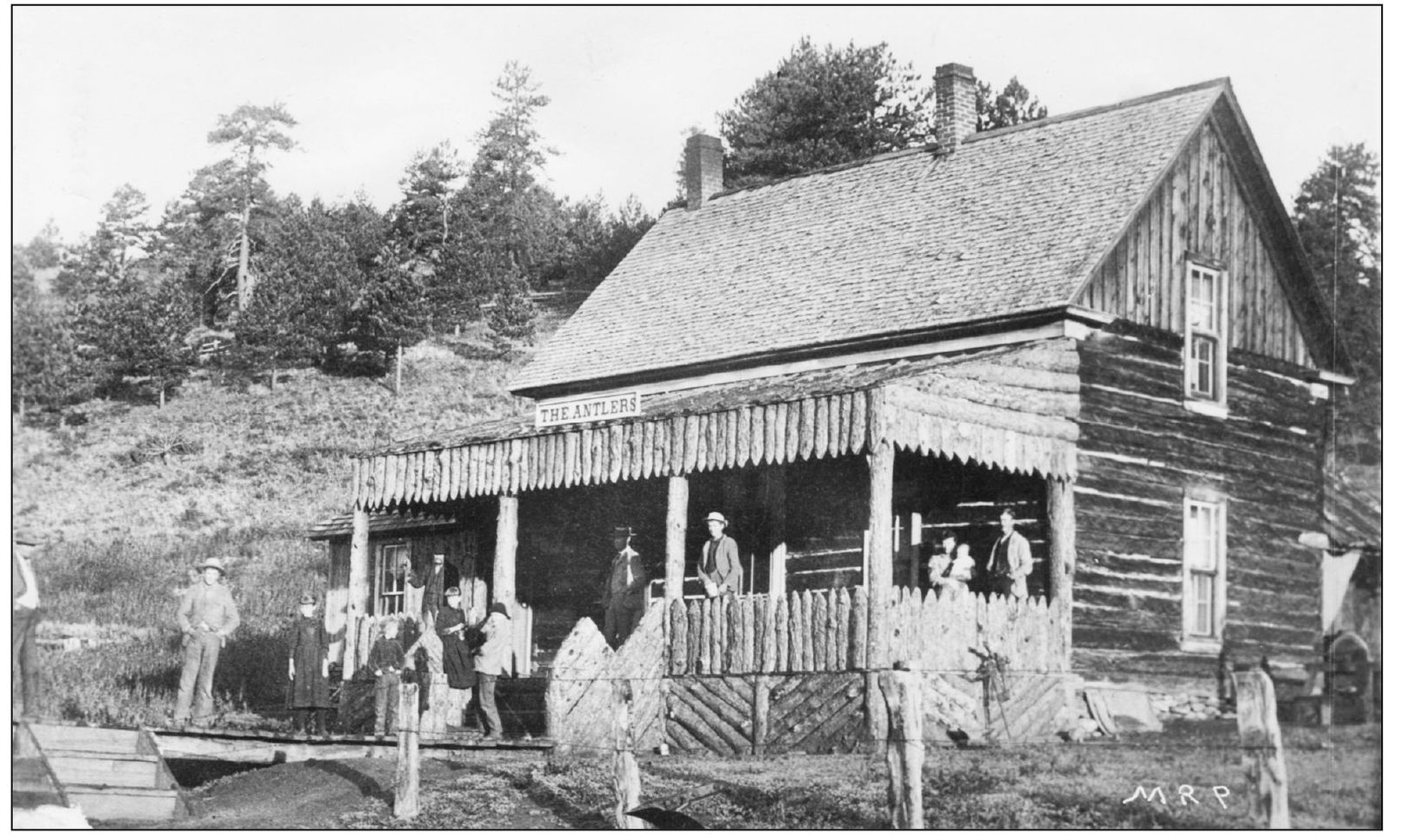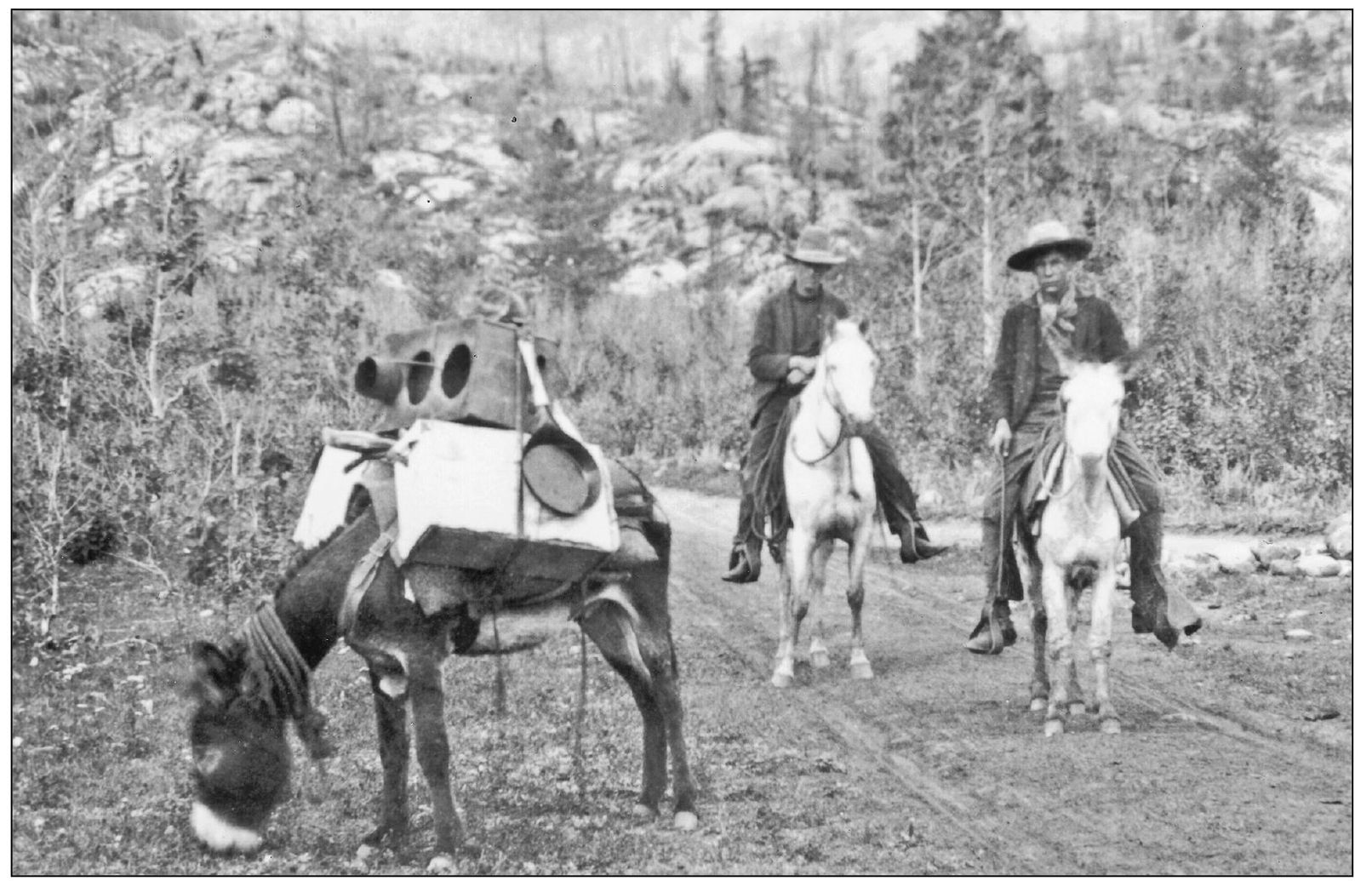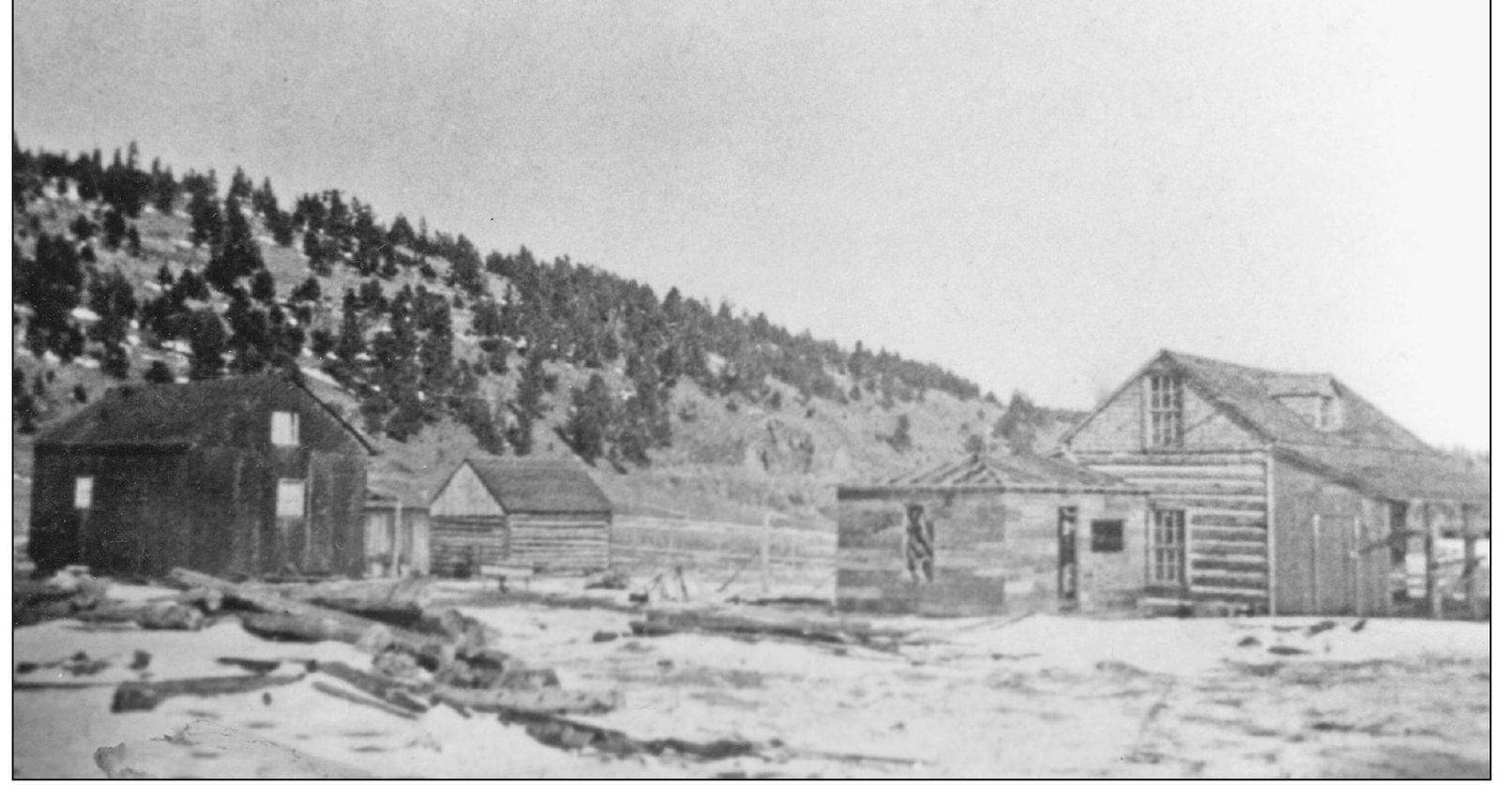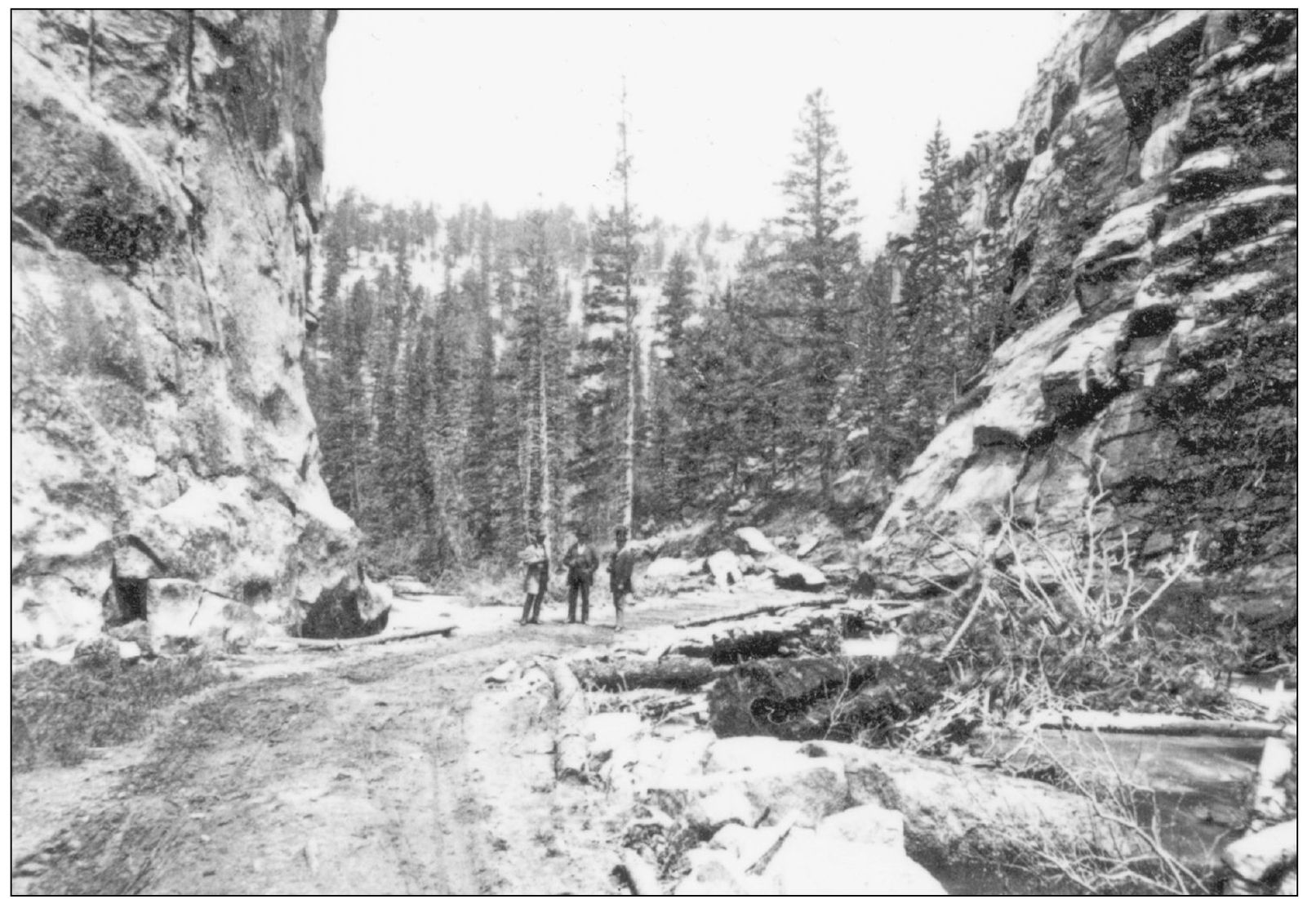This book owes its existence to the generosity of a number of people, some of whom Ive never met.
The Nederland Area Historical Society shared its archive of photographs and kindly read the draft manuscript. When I contacted George and Sandra Breymaier of Berlin Center, Ohio, about their grandfathers scrapbook, they most generously allowed me to scan their photographs. Mary Wingate and the Sterling family also agreed willingly to share their photographs, as did Sue Leto of Nederland, who is the guardian of the Jimmy Griffith collection.
Eldora has saved much of its history through stories published in the town newsletter, currently edited by Diane Brown. Earl and Barbara Bolton answered questions and told me many stories about Eldora and their relatives, the Boltons and the Lillys. They have collected many, many photographs over the years, and they most graciously share them here, but they wanted to make sure I thanked the entire Eldora community for cherishing and saving its past.
My greatest thanks go out to everyone who has held onto the stories and photographs from our pastI am deeply indebted to you.
BIBLIOGRAPHY
Becker, Isabel M. Nederland: A Trip to Cloudland . Denver, CO: Scott Becker Press, 1989.
Boyd, Leanne C., and Glenn H. Carson. Atlas of Colorado Ghost Towns, Volume 1 . Deming, NM: Cache Press, 1984.
Brown, Robert L. Ghost Towns of the Colorado Rockies . Caldwell, ID: The Caxton Printers, Ltd., 1969.
Buchanan, John W., and Doris G. Buchanan. The Story of Ghost Town Caribou . Boulder, CO: Boulder Publishing, Inc., 1957.
Cobb, Harrison S. Prospecting Our Past: Gold, Silver, and Tungsten Mills of Boulder County . Longmont, CO: Book Lode, 1999.
Kemp, Donald C., and John R. Langley. Happy Valley, A Promoters Paradise . Denver, CO: Smith Brooks Printing Company, 1945.
Kemp, Donald C. Silver, Gold, and Black Iron: A Story of the Grand Island Mining District of Boulder County, Colorado . Denver, CO: Sage Books, 1960.
Meyring, Geneva. Nederland, Then and Now . Boulder, CO: Boulder Publishing, Inc., 1941.
Pettem, Silvia. Excursions from Peak to Peak: Then and Now . Longmont, CO: Book Lode, 1997.
Smith, Duane A. Silver Saga: The Story of Caribou, Colorado, Revised Edition . Boulder, CO: University Press of Colorado, 2003.
Waldron, Lana, et al. Boulder County Women: Some Oral Histories . Boulder, CO: University of Colorado thesis, 1978.
Find more books like this at
www.imagesofamerica.com
Search for your hometown history, your old
stomping grounds, and even your favorite sports team.
One
NEDERLAND
Native Americans hunted in the meadows and mountains surrounding Nederland, and hunting is what brought the first white men to the area. Nathan Brown stayed and built a house near Middle Boulder Creek about 1864, which later was used as an inn, and the tiny collection of buildings on the wagon road between Ward and Black Hawk was called Brownsville. Another hunter and prospector, Sam Conger, discovered silver and staked a claim in 1869 in an area that became the mining camp of Caribou.
Nederland turned from a ranching community to a transportation and supply center. When a Dutch company, the Mining Company Nederland of The Hague, bought the Caribou Mine, the community that had been called Brownsville, Dayton, and Middle Boulder took on the name of Nederland. As many as 100 passengers a day rode the stages on the Boulder-Caribou toll road, and beds in the stage stop town of Nederland were rented in eight-hour shifts. Extra doors were added to saloons, and restaurant patrons were expected to be finished eating in 20 minutes. The scene was repeated during the late 1890s, when gold was discovered at Eldora.
Like most mining towns, Nederland declined when the bottom dropped out of the silver and gold markets. It suffered several fires, and the flu epidemic of 19161917 took a heavy toll. But its fortunes changed again with the discovery of tungsten by Sam Conger, the same man who discovered silver in Caribou. During World War I, in its third and biggest boom, Nederlands population swelled to 3,000twice the size it is todayand another 2,000 were estimated to live nearby. The Conger mine became the greatest tungsten mine in the world. Between 1913 and 1916, about $15 million worth of tungsten was mined from the area each year. When the war ended, mining and milling shut down, stores closed, and many houses were left vacant as the miners moved out. During World War II, Nederland felt another flurry of mining activity as tungsten once again was in demand.
Today Nederland is again thriving as a recreation and commercial center for the area.
Hunters and prospectors wandered the mountains west of Boulder in 1869, when this drawing was made. In 1864, hunter Sam Conger found some promising surface ore, and he stashed it in a friends barn. Five years later, he finally got it assayed, and he sent friends Billy Martin and George Lytle to stake claims for the three of them. Those claims were just the beginning of the rich mining history of Caribou and Nederland. (U.S. Geological Survey.)
The areas meadows also attracted ranchers, and by 1870 the community was known as Brownsville, named for Nathan W. Brown, an early settler and innkeeper. This house was built for Abel Goss by R. Parsons in 1867. It was later used by Mary Roose as a hotel before she built a larger hotel in Nederland. Then the Hetzers lived in it and ran a hay ranch in the meadow that later was flooded for Barker Reservoir. (Goldie Cameron/Sterling family.)
A mule was a prospectors best friend. The sure-footed creatures could carry heavy loads and work hard all day. When the miners no longer needed them and did not want to feed them, they just let them loose to fend for themselves. Town children had use of them during the winter months, but had to give up their newfound pets when the miners returned in the spring. (Nederland Area Historical Society Collection.)
John H. Pickle and Sam Conger built the first road from Central City to Middle Boulder and Caribou in 1870. Pickle moved to Nederland from Central City, built this house, and opened a grocery store on Main Street. He also served as the president of the Central City, Nederland, and Caribou Telegraph Company. By 1874, Nederland was known as a telegraphic center with lines radiating to Caribou, Central City, Georgetown, Boulder, and Longmont. (Nederland Area Historical Society Collection.)

